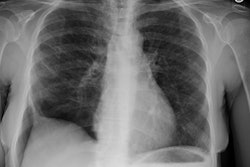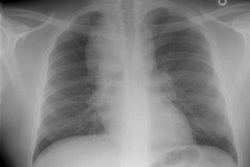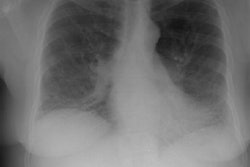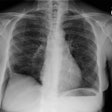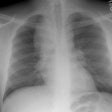AJR Am J Roentgenol 1997 Feb;168(2):333-338
Acute interstitial pneumonia: high-resolution CT findings correlated withpathology.Ichikado K, Johkoh T, Ikezoe J, Takeuchi N, Kohno N, Arisawa J, Nakamura H, Nagareda T, Itoh H, Ando M
Department of Radiology, Osaka University, Medical School, Suita City, Japan.
OBJECTIVE: The purpose of this study was to evaluate the relation between pathologic phases and high-resolution CT (HRCT) findings in patients with acute interstitial pneumonia (AIP).
MATERIALS AND METHODS: Our retrospective review found 14 patients with AIP who were included in this study. Three patients were pathologically diagnosed as having AIP by open lung biopsy, and the other 11 patients were confirmed at autopsy. In eight of the 11 autopsy patients, the postmortem lungs were inflated and fixed by Heitzman's method, and a postmortem HRCT scan was obtained on all 11 autopsy patients. Paying special attention to the disease stage, we selected 27 areas of the lung from antemortem or postmortem HRCT and correlated them with pathologic findings. RESULTS: Nine areas of the lung that showed increased attenuation without traction bronchiectasis were associated with either the exudative (n = 5) or early proliferative (n = 4) phase of AIP. Eleven areas of increased attenuation with traction bronchiectasis were associated with either the proliferative (n = 4) or fibrotic (n = 7) phase of AIP. Honey-combing, observed in one area of the lung, corresponded to restructuring of distal airspaces and dense interstitial fibrosis. Six spared areas, within or adjacent to areas of increased attenuation, showed pathologic findings of the exudative phase.
CONCLUSION: HRCT findings were not specific for the pathologic findings in our patients with AIP. Nevertheless, the findings of traction bronchiectasis in areas of increased attenuation suggested the proliferative or fibrotic phase.
PMID: 9016201, MUID: 97168608

